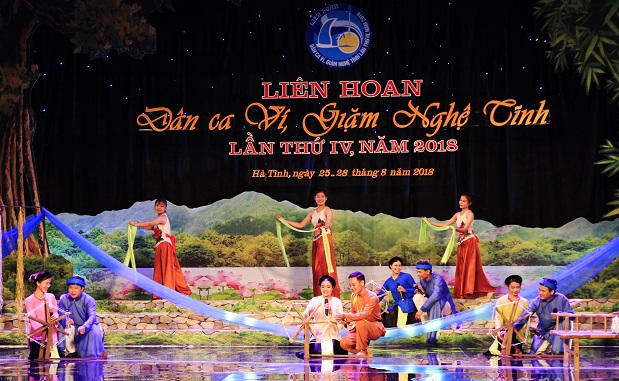Hát Ví-Giặm is one of the distinctive folk music genres of Central Vietnam, particularly developed in the Nghệ An and Hà Tĩnh regions. This is a form of oral art that deeply expresses the emotions, sentiments, and cultural identity of the local people. Here are some detailed insights about Hát Ví-Giặm:
1. Origin and History
History of Formation: Hát Ví-Giặm originates from the daily labor and life activities of the people, often performed during festivals, weddings, or while working. It has become an indispensable part of the cultural life of the Central Vietnamese.
Name: “Ví” and “Giặm” can be understood as two forms of call-and-response singing. Hát Ví tends to be more free-form, while Hát Giặm usually has a more structured format.
2. Artistic Characteristics
Content: The songs often revolve around themes such as love, life, homeland, landscapes, and values of folk culture. The lyrics are typically lyrical and profound, reflecting the sentiments and feelings of the singers.
Performance Style: Hát Ví-Giặm is usually presented in the form of call-and-response singing between two or more people. The performers not only sing but also express emotions through gestures and body language, creating a friendly and intimate atmosphere.
3. Musical Instruments
Use of Instruments: In Hát Ví-Giặm performances, various traditional instruments are commonly used, such as the đàn tranh (zither), đàn bầu (monochord), and other folk instruments. These instruments not only create rich melodies but also highlight the beauty of the songs.
4. Cultural Significance
Heritage Preservation: Hát Ví-Giặm is not just a form of entertainment; it is also an important part of Vietnam’s intangible cultural heritage. It embodies the unique cultural values and spirit of unity among the Central Vietnamese people.
UNESCO Recognition: In 2014, Hát Ví-Giặm Nghệ Tĩnh was recognized by UNESCO as an Intangible Cultural Heritage of Humanity, contributing to the awareness of the value of this art form.
5. Current Situation
Development and Spread: Today, Hát Ví-Giặm is increasingly well-known, not only domestically but also internationally. Many cultural activities, festivals, and performance programs have been organized to introduce and promote this art form, aiming to attract the younger generation to participate and preserve traditional cultural values.

